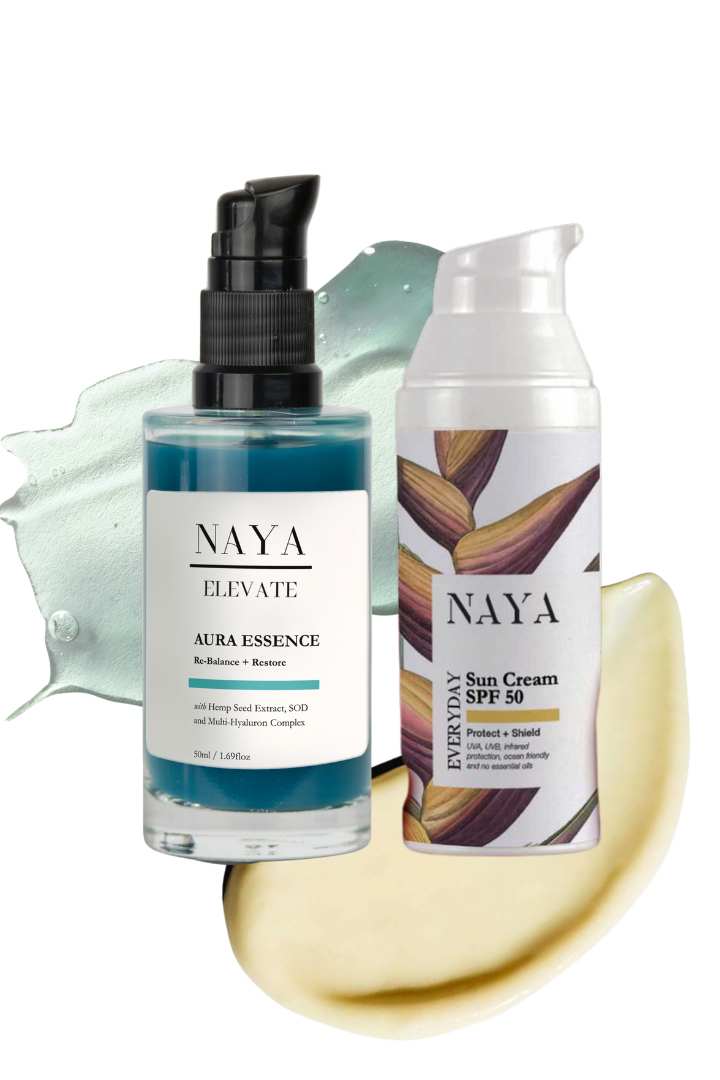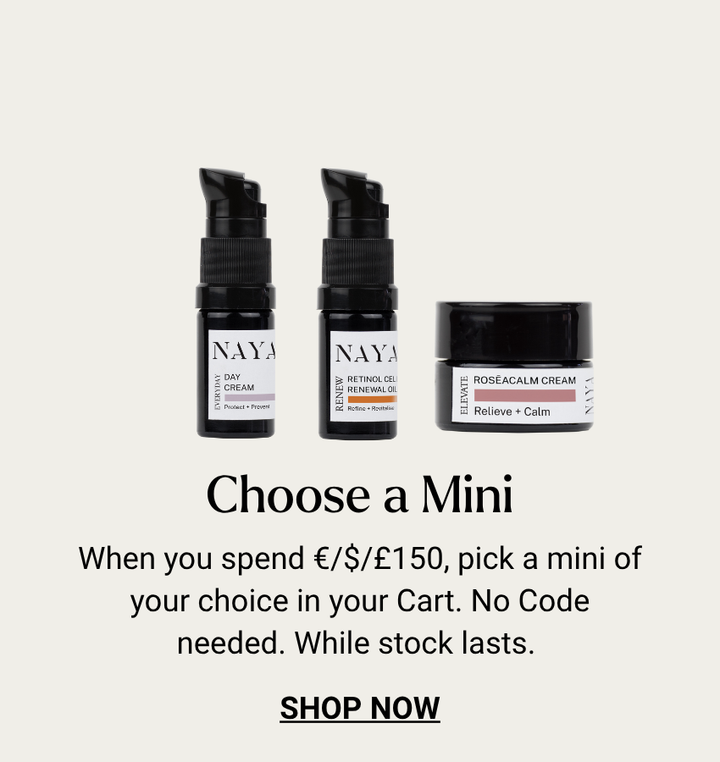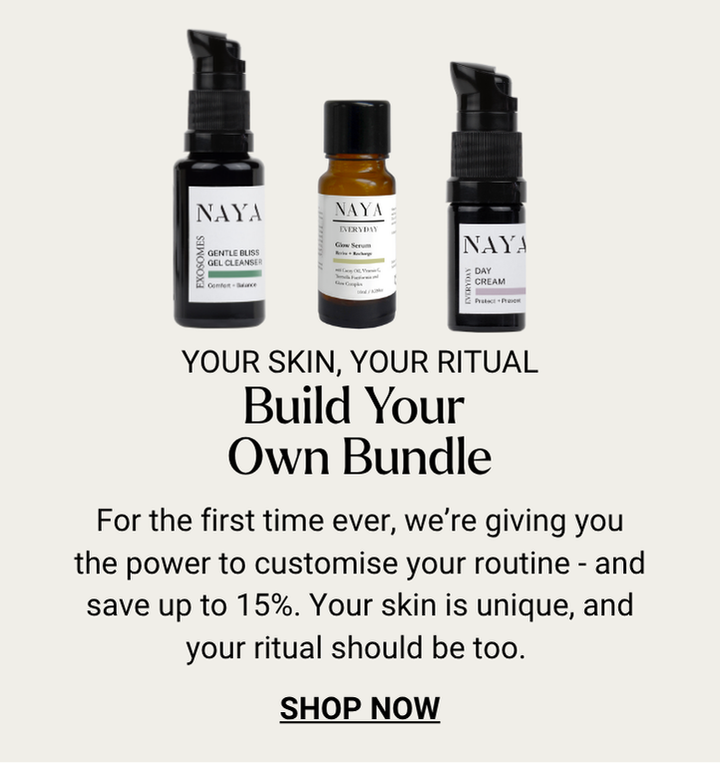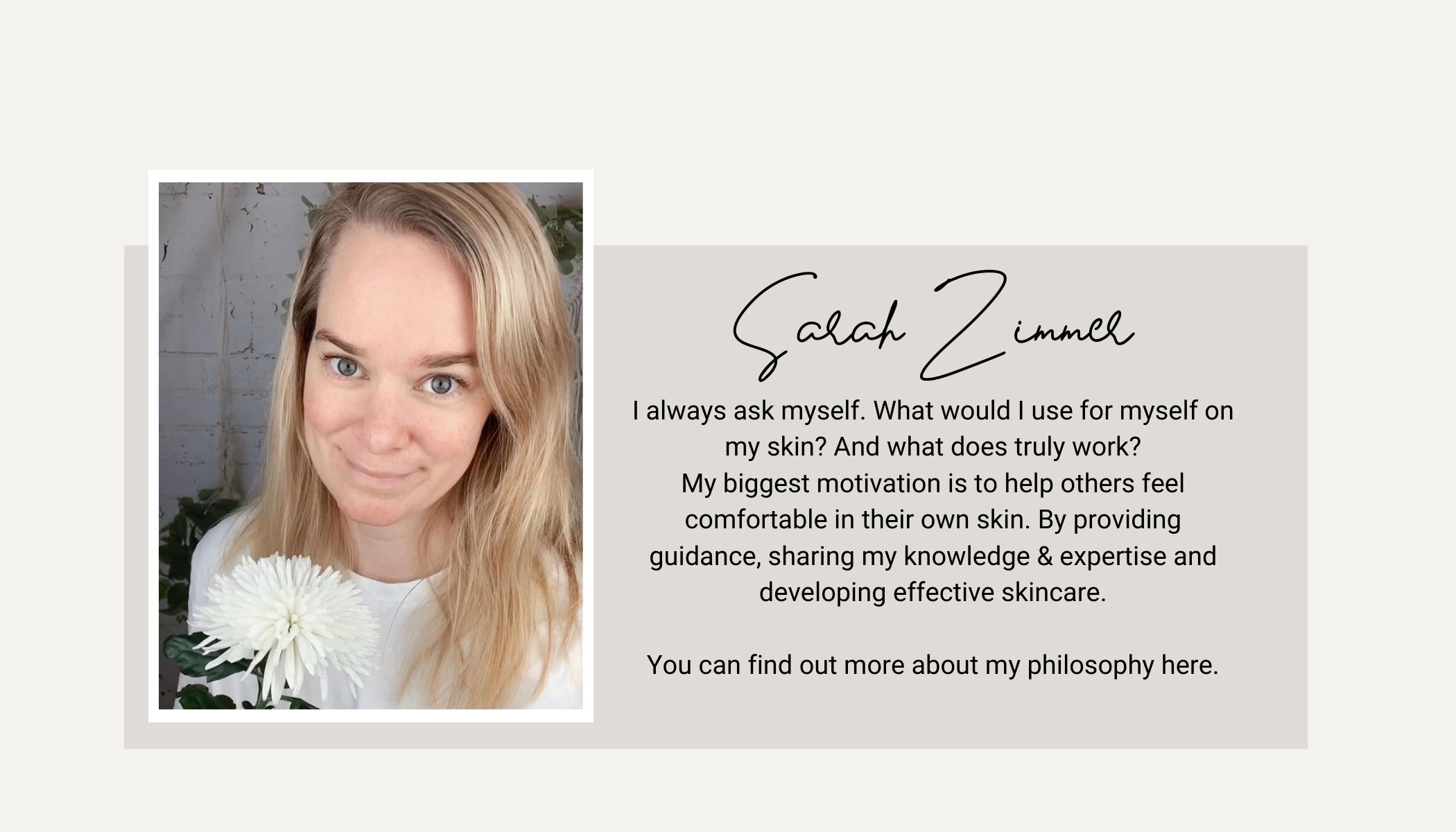Couperose or Rosacea? Understand the Symptoms, Causes, and Best Care Tips

Couperose Skin vs Rosacea: How to Tell the Difference
"Lately, after exercise, I’ve been noticing a reddish, blushed tinge to my face. It used to disappear within minutes, but now it lingers for hours."
My friend told. And it prompted me to investigate what could be happening to her facial skin — and what I found is something many of us might be experiencing without even knowing it: couperose skin or rosacea.
As a formulator who creates skincare designed to strengthen the skin barrier and protect it long-term, I always test on myself first.
I believe in making products that not only make your skin look beautiful but also help you maintain healthy skin well into your later years.
Our skin is always evolving. It is a living organ and changes.
Changes in temperature, switching products, and even dietary choices can affect how your skin responds — especially if you're dealing with issues like rosacea or couperose.
What is Couperose Skin?
Couperose skin is often characterised by visible blood vessels, facial redness, and sensitivity, especially in the affected area like cheeks or the nose. It appears as a flushed or blushed look, with small blood vessels (also called telangiectasia) becoming more noticeable as we age.
Couperose can feel tight, irritated, and often dry.
Unlike rosacea, couperose skin doesn’t typically include inflammation or acne-like breakouts, though it is frequently mistaken for milder cases of rosacea.
It's essential to support couperose-prone skin with soothing products and barrier-strengthening care to reduce increased blood flow to the facial skin that may aggravate symptoms.
What is Rosacea ?
Rosacea (pronounced roh-ZAY-sha) is a chronic inflammatory condition that causes skin redness, flushing, and sometimes pus-filled bumps. In many cases, rosacea also includes symptoms like irritated skin, a burning sensation, and visible small blood vessels.
The affected area often includes the cheeks, chin, nose, and forehead. Some people also suffer from ocular rosacea, which affects the eyes.
People with rosacea often have acne rosacea, a subtype where breakouts resemble traditional acne. These symptoms can be made worse by triggers such as spicy food, alcohol, fragranced skin care products, exercise, or weather conditions. Rosacea can be further complicated by immune system over-activation or allergic reactions.
According to a survey conducted by the National Society of Rosacea the most common triggers are the following. You may want to look at this list and eliminate or minimise the items that could trigger redness. So, let's go:
- Sun exposure 81% - Both UVA and UVB rays can trigger a short-term flare up and aggravate the condition.
- Emotional stress 79%
- Hot weather 75%
- Wind 57%
- Heavy exercise 56%
- Alcohol consumption 52%
- Hot baths 51%
- Cold weather 46%
- Certain foods 45% - Known irritants include: Spices found in Asian cooking, sausages, black pepper, vinegar, mustard, garlic, onions, citrus, chocolate, some nuts, papaya, beans, tomatoes and wheat germ.
- Additives 45% - MSG (Monosodium glutamate), benzoate, sulphites, nitrites and food dyes.
- Humidity 44%
- Indoor heat 41%
- Fragrance (incl. essential oils) skin-care products
- Perfumes 41%
- Heated beverages 36%
- Certain cosmetics 27%
- Medications (specifically stimulants) 15%
- Medical conditions 15%
- Certain fruits 13%
- Marinated meats 10%
- Certain vegetables 9%
- Dairy products 8%
Couperose vs Rosacea: How to Tell
While both conditions share facial redness and visible blood vessels, there are key differences.
Couperose is more about weakened capillaries and sensitivity, while rosacea is a skin-irritating, inflammatory disorder. You may experience redness, but only those with rosacea will see pus-filled, acne-like lesions or systemic flare-ups.
One clue? Rosacea may come and go in flare-ups, whereas couperose often presents as consistent redness with less obvious triggers. If you’re noticing flushing skin after wine or exercise, and breakouts, it may be rosacea. If it’s tightness and redness without pimples, it could be couperose.
Why Couperose Skin Deserves More Attention
Couperose skin is more than just a cosmetic concern. The increased blood flow and broken capillaries are signs that your skin barrier might need some extra love.
At NAYA, we focus on building skincare that supports the barrier and helps reduce the symptoms of both rosacea and couperose skin.
Our line is free of known irritants like synthetic fragrances and loaded with nourishing botanicals.
Everyday Habits That Can Help
- Use a fragrance-free cleansers like our Everyday Cleansing Oil.
- Avoid extremes in temperature, both in water and in the environment.
- Gently remove makeup and dirt with Reusable Cotton Pads.
- Avoid rosewater.
- Apply Everyday Glow Serum to reduce skin redness.
- Protect your skin from UVB & UVA rays. Sunscreen is not your only strategy.
What About Wine?
Interestingly, studies show white wine is more strongly associated with rosacea than red.
A study from the American Academy of Dermatology found that women who drank just five glasses of white wine a month had a 49% increased risk of developing rosacea.
The preservatives may be the culprit. If you're prone to rosacea symptoms, it may be worth experimenting with reducing or avoiding wine altogether.
Mites and Microbes
Research is also uncovering a microbial component. Demodex mites, invisible to the naked eye, live on our skin and can sometimes trigger acne rosacea. These mites can carry bacteria like Staphylococcus epidermidis, which further inflames the skin.
Antibiotics may reduce symptoms, but topical barrier-strengthening care and gentle hygiene are essential.
Couperose and the Skin Barrier
At NAYA, we focus on fortifying the skin barrier — which is essential for anyone experiencing facial redness, rosacea, or couperose.
That’s why we developed products with calming, barrier-repairing ingredients like ectoin, niacinamide, and bisabolol to strengthen the capillary walls and reduce the appearance of redness and irritated skin.
Caring for Couperose skin and Rosacea
- An elimination diet of any known irritants is a great starting point.
- Following a consistent skin care routine is essential for couperose skin and rosacea. Use gentle, fragrance-free products containing natural, certified-organic ingredients like bisabolol, aloe vera and many others.
- That noxious perfume that smells sweet to you, may be triggering your rosacea. And if you're using fragranced skin care products, STOP! There's no regulation against all types of chemical ingredients in products under the title of "fragrance” or "parfum.” The exact ingredients are protected as trade secrets and don't have to be disclosed on the label. What this means is that there could be any one of over 3,000 chemicals like phthalates, parabens, and synthetic musks in your fragranced products and perfumes and any one of them could be triggering your rosacea (not to mention a bunch of other undesirable side effects).
- Exercising and heating your core temperature can cause redness and flushing that can last for weeks. Aim for low-intensity or moderate workouts in a well-ventilated room for no longer than 45 minutes. Drink plenty of water during, before and after.
- Some of the best DIY internal remedies for rosacea include flaxseed oil, zinc, probiotics, and vitamin C.
- Always wash your face with lukewarm water. Very hot or cold water can cause blood to rush to the face and cause more redness.
- Using the right products can help strengthen capillary walls, soothe the skin and reduce the appearance of redness. Use a good moisturiser helps reduce redness and prevent burning, stinging, itching and irritation.
Everyday Nurturing Ritual to soothe Rosacea
- Cleanse day and night with Everyday Cleansing Oil.
- Follow with Reusable Cotton Pads to remove any residue of cleaner.
- Discover our Aura Essence Serum for a soothing effect.
- Discover our RoseaCalm Cream.
- Follow with the Everyday Sun Cream SPF 50
- Avoid rubbing oil onto your face.
If you have any questions, please let me know and we are here to support you.
Learn More in Our Skin Barrier Bootcamp
Want to understand how to support couperose skin and rosacea from within?
Visit our Skin Barrier Bootcamp, where we dive into everything from triggers to treatments, holistic skincare rituals, and the science behind barrier health. Education is the first step to empowered skin health.
Support Skin with Face Yoga
Beyond topical skincare, Face Yoga is a simple, powerful way to stimulate lymphatic flow and massage products like the Exosomes Serum deeper into the skin.
It enhances circulation without overheating the skin, and helps reduce flushing, tone facial muscles, and promote skin resilience — perfect for anyone with couperose, rosacea, or sensitive facial skin.
If you have questions or want to discuss your symptoms and skincare journey, we’re here to help. Couperose and rosacea don’t have to be lifelong struggles — with the right knowledge and care, your skin can thrive.
Conclusion
In conclusion, while couperose skin and rosacea share similar symptoms such as persistent facial redness, visible blood vessels, and irritated skin, they are distinct conditions that require different approaches to care.
Understanding whether you’re dealing with couperose or rosacea is essential for choosing the right skincare routine and avoiding known triggers.
A consistent regimen with gentle, fragrance-free products, along with lifestyle adjustments, can make a significant difference in managing redness, soothing affected areas, and supporting your immune system.
Many people with rosacea and couperose have found relief by focusing on calming inflammation, protecting the facial skin barrier, and reducing skin irritating influences—proving that with the right care, visibly healthier skin is absolutely possible.











Leave a comment